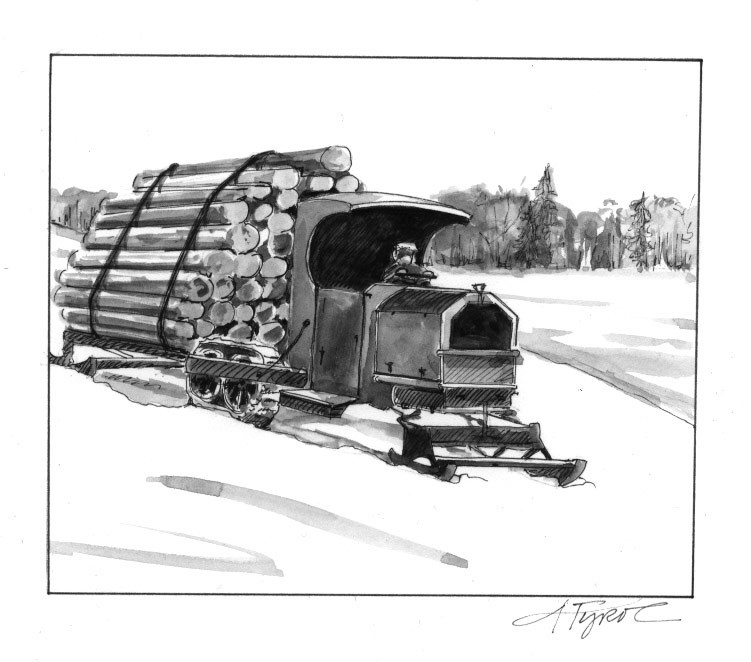
A logging truck rolling through town on a winter’s day is still a common sight in Vermont and New Hampshire. Though winter has historically been the prime season for logging hereabouts, logging these days happens year-round (except for mud season, of course), and there are good ecological reasons for deciding which season is best for working on each piece of land.
Winter has long been king for the simple reason that, historically, that’s when people had time for logging. A century ago, farmers and hired hands headed for the woods to make some extra money in the off-season. Today, many farmers still make the winter migration into the woods, but as logging has become more dependent upon specialized tools and skills, the part-timers have been outnumbered by the full-time professionals.
Back when all logging was done with horses, winter was also preferred because logs could be slid on snow more easily than on bare ground. Logging jobs would be carefully laid out to make sure that every tree moved downhill, and downhill only, from the moment it was cut to the moment it was sawed or loaded onto a truck or railcar. There was no easy way to move large logs uphill, no matter how many horses or oxen were assembled on the scene.
In the White Mountains and the upper tributaries of the Connecticut river, lumberman often went so far as to spread water on winter skid trails to make them still more icy and slippery. If you’ve ever seen old photographs of horse teams pulling sled trains, with each sled stacked high with dozens of logs, you can bet that the haul was downhill all the way, most likely on ice.
Today’s logging equipment brings hundreds of horsepower to a logging job, but winter is still the preferred season for many jobs because the soil is protected, either under a blanket of snow or by being frozen. Soils, especially those that are wet much of the year, are easily compacted by vehicles moving through the woods, and compacted soil kills tree roots outright or make it harder for them to absorb water and nutrients.
Some logging, however, is best done during the driest seasons of the year. Logging on steep ridges and hillsides can be too dangerous in winter even for modern equipment because compacted snow makes the ground too slippery to safely handle either logs or equipment. These jobs are usually tackled when the snow is gone and the soil is as dry as possible, to minimize soil disturbance and prevent subsequent soil erosion.
And, of course, there are times when the snow is just too deep for winter logging, especially towards February and March. Skidders and forwarders can move through several feet of snow with little difficulty, but there are parts of our two states that routinely see much more snow than that in a good winter. These jobs, too, need to wait for the summer or autumn.
Finally, your choice of season can influence which trees will grow back afterwards. If you’re looking to grow trees from seeds that germinate best on exposed soil, you will want to log in the summer months when the logging equipment will rough up the soil a bit and make it easier for these trees to get started. White pine is the best example of this, though the same is true for yellow birch, many of the oaks, and even hemlock. Most maple seeds, on the other hand, germinate just fine on undisturbed soils, meaning that winter logging may be best if you want to favor your maples.
White pine and white oak can make planning a logging job especially easy because their cones and acorns spend two years developing on the tree before falling to the ground. Foresters and loggers, therefore, can peer up into the tree tops one autumn and know how good the cone and acorn crop will be the following autumn, making it possible to schedule a logging job for exactly when a bumper crop is getting ready to hit the ground.
Red oaks and the various maples also tip their hands during heavy seed years but only provide a few months notice. These species set their seeds in the spring and drop them in the autumn of the same year.
Planning a logging job on your own land, or wondering why logging is happening nearby at a certain time? Though logging crews may be starting a job simply because they happened to be in the neighborhood, the chances are good that they may also be responding to something particular about the trees or the land in a given spot. A closer look on your part may reveal why.


Discussion *